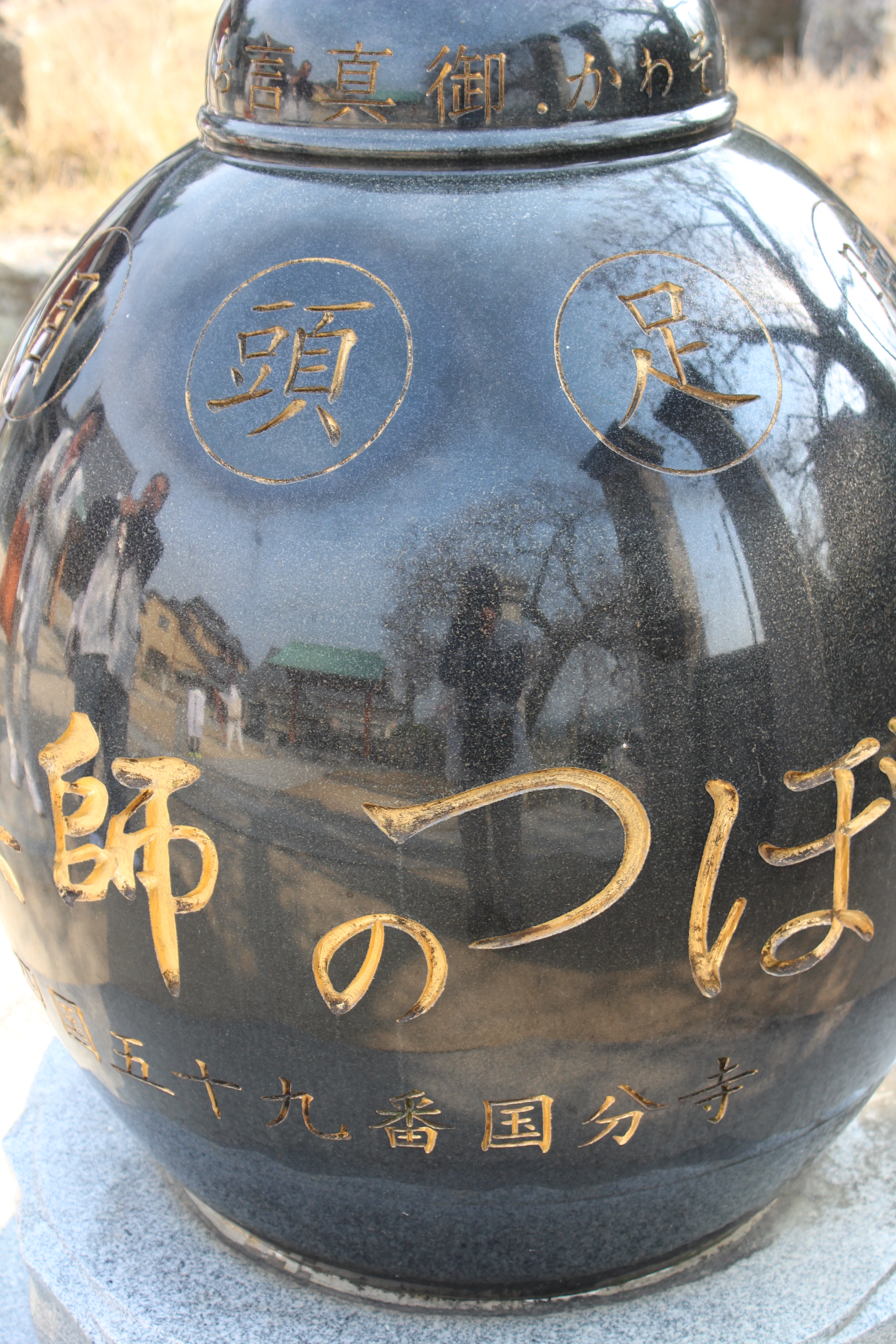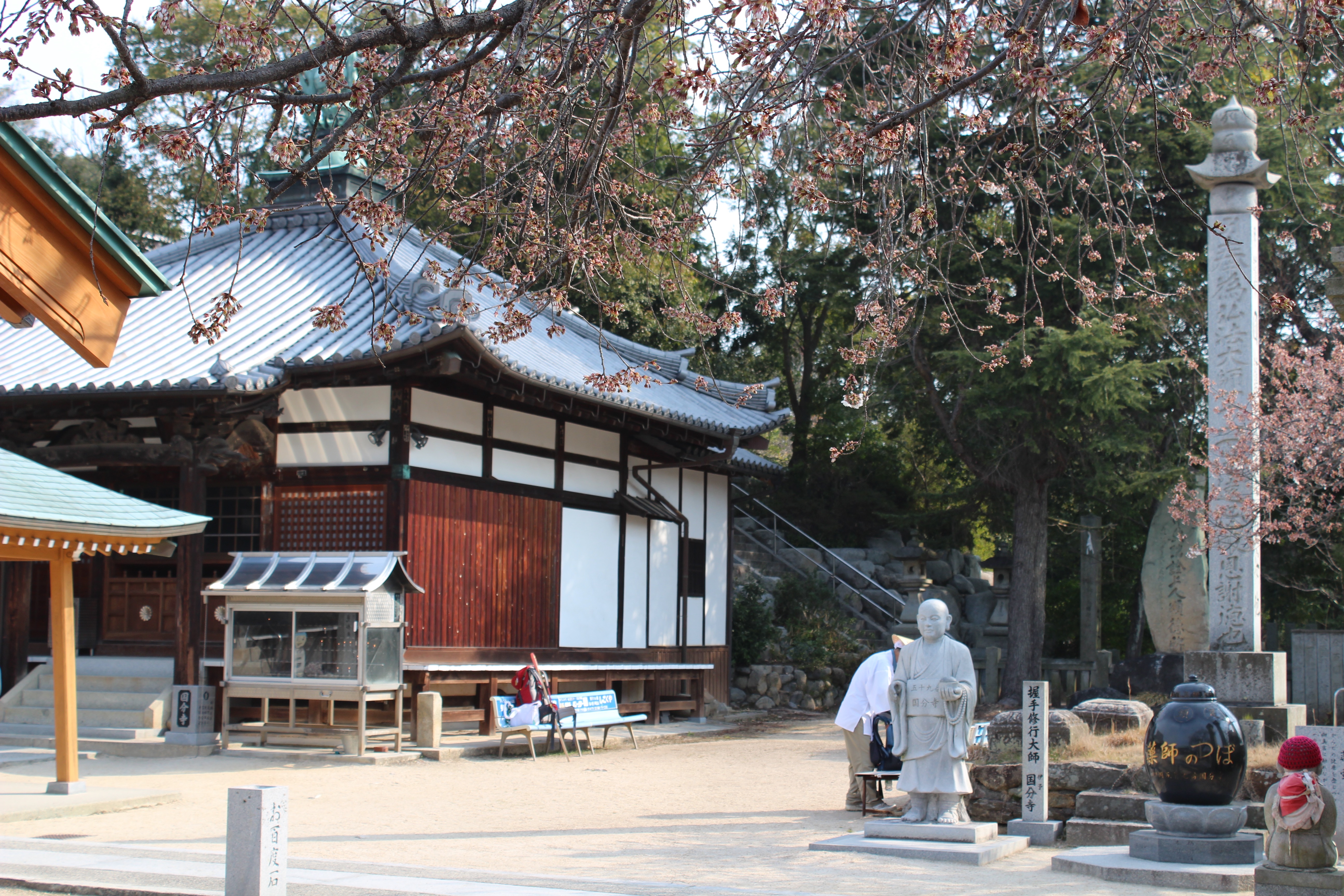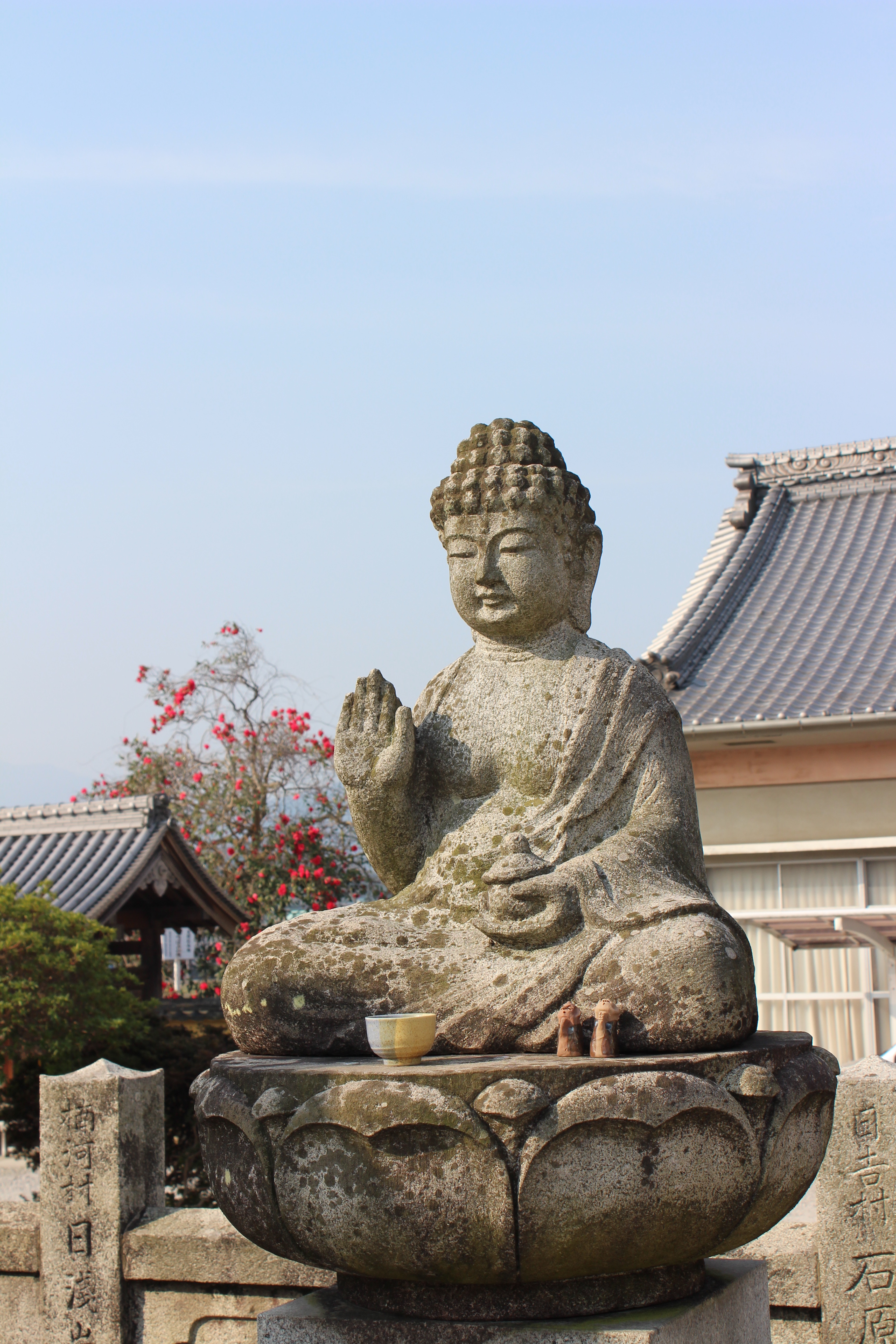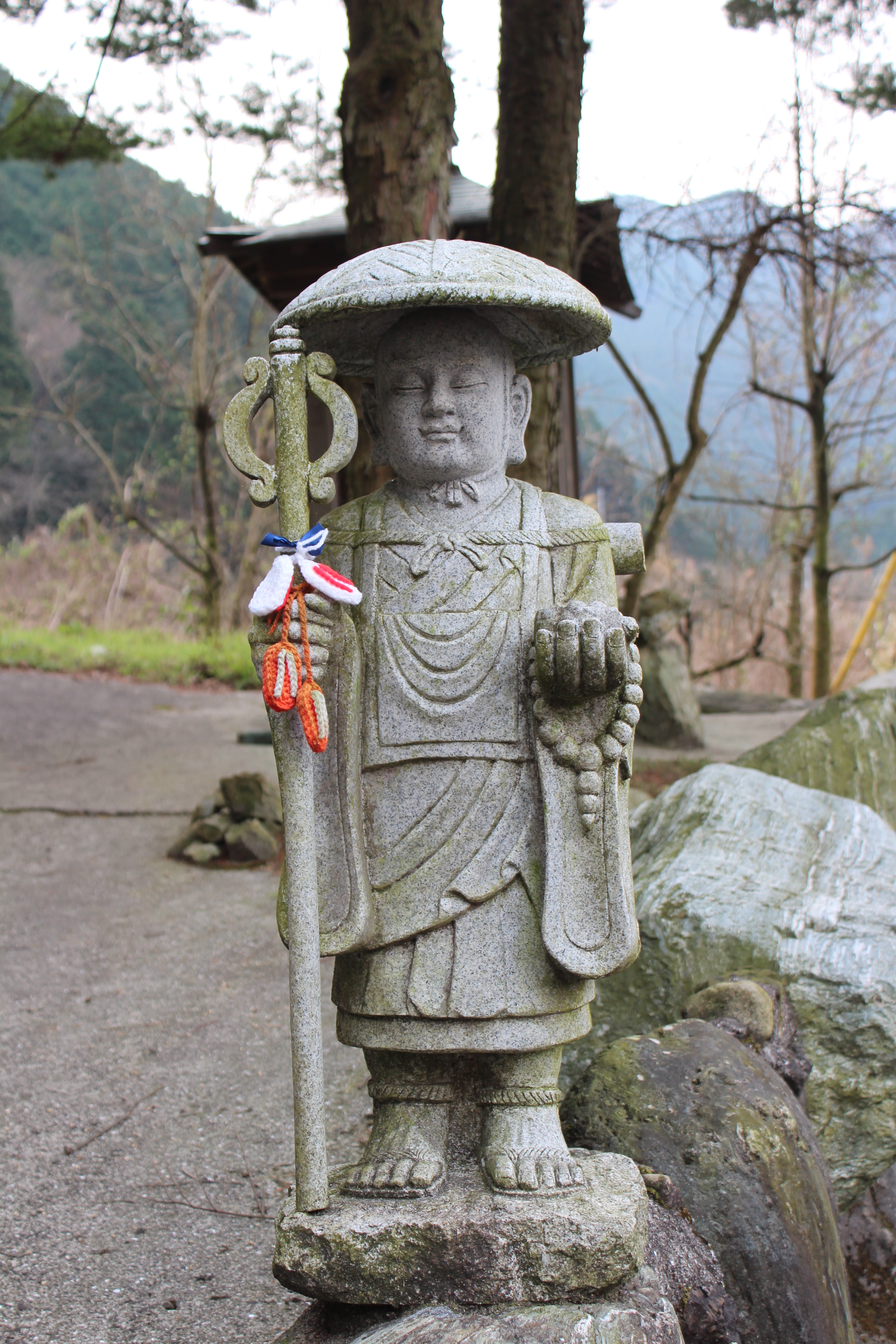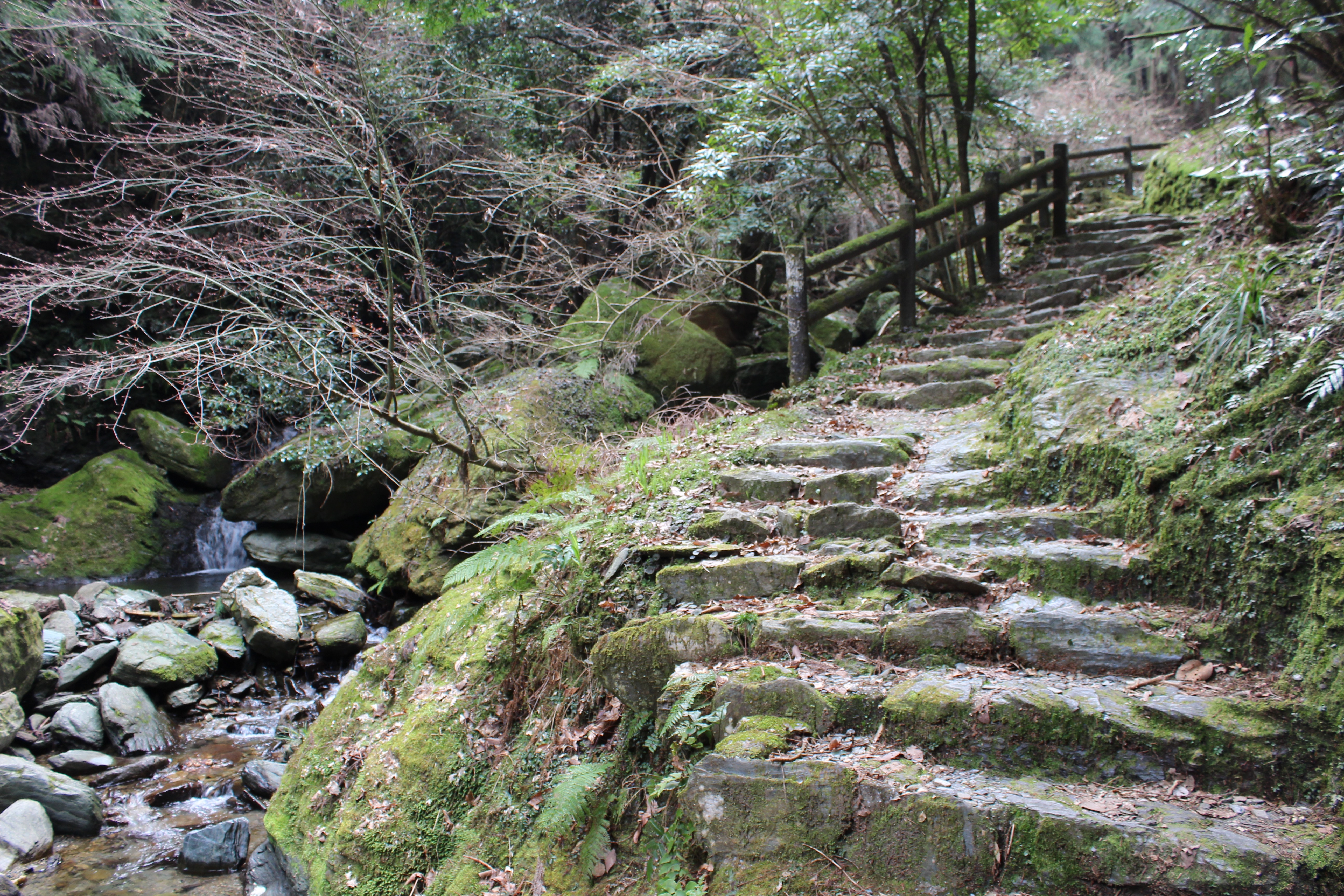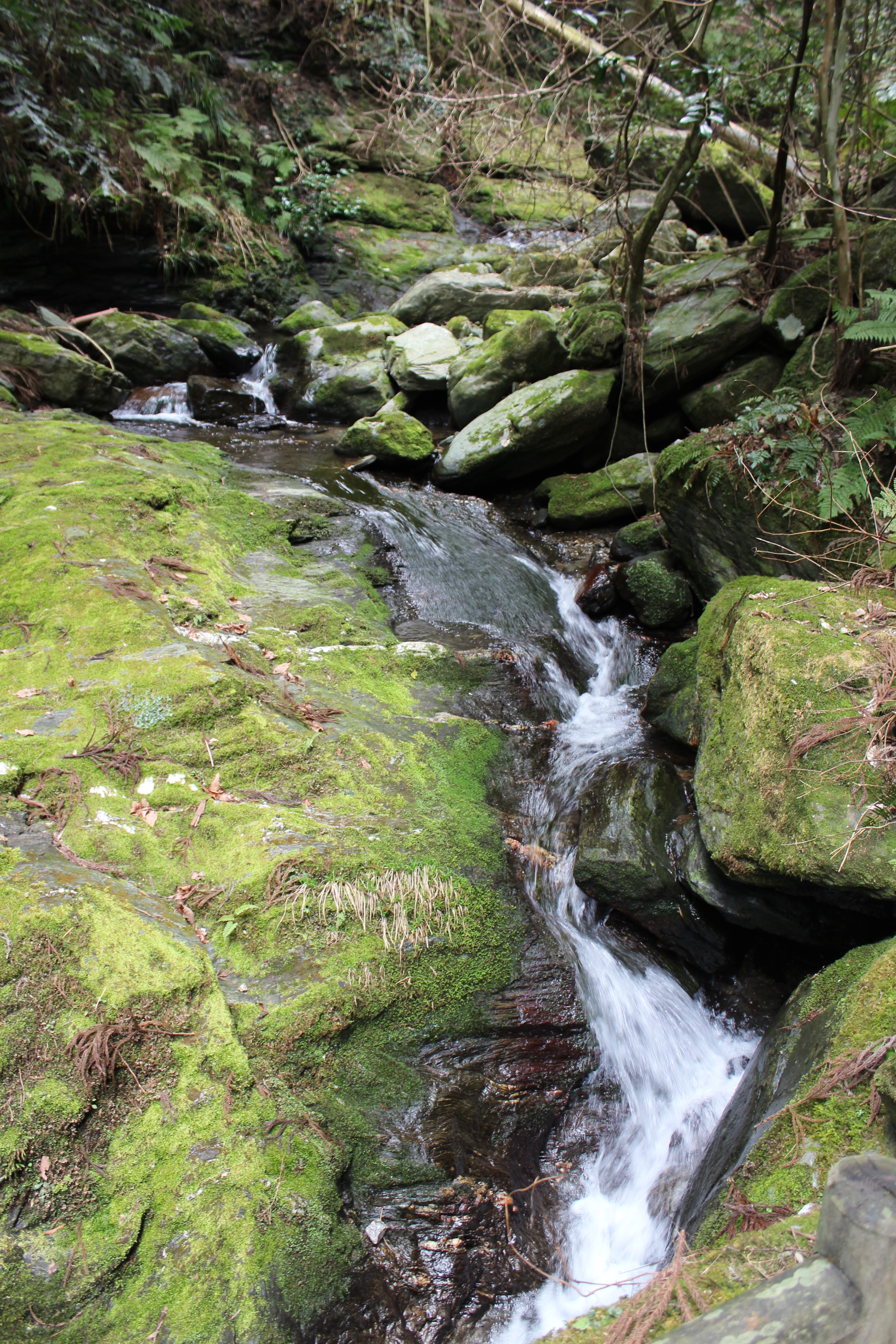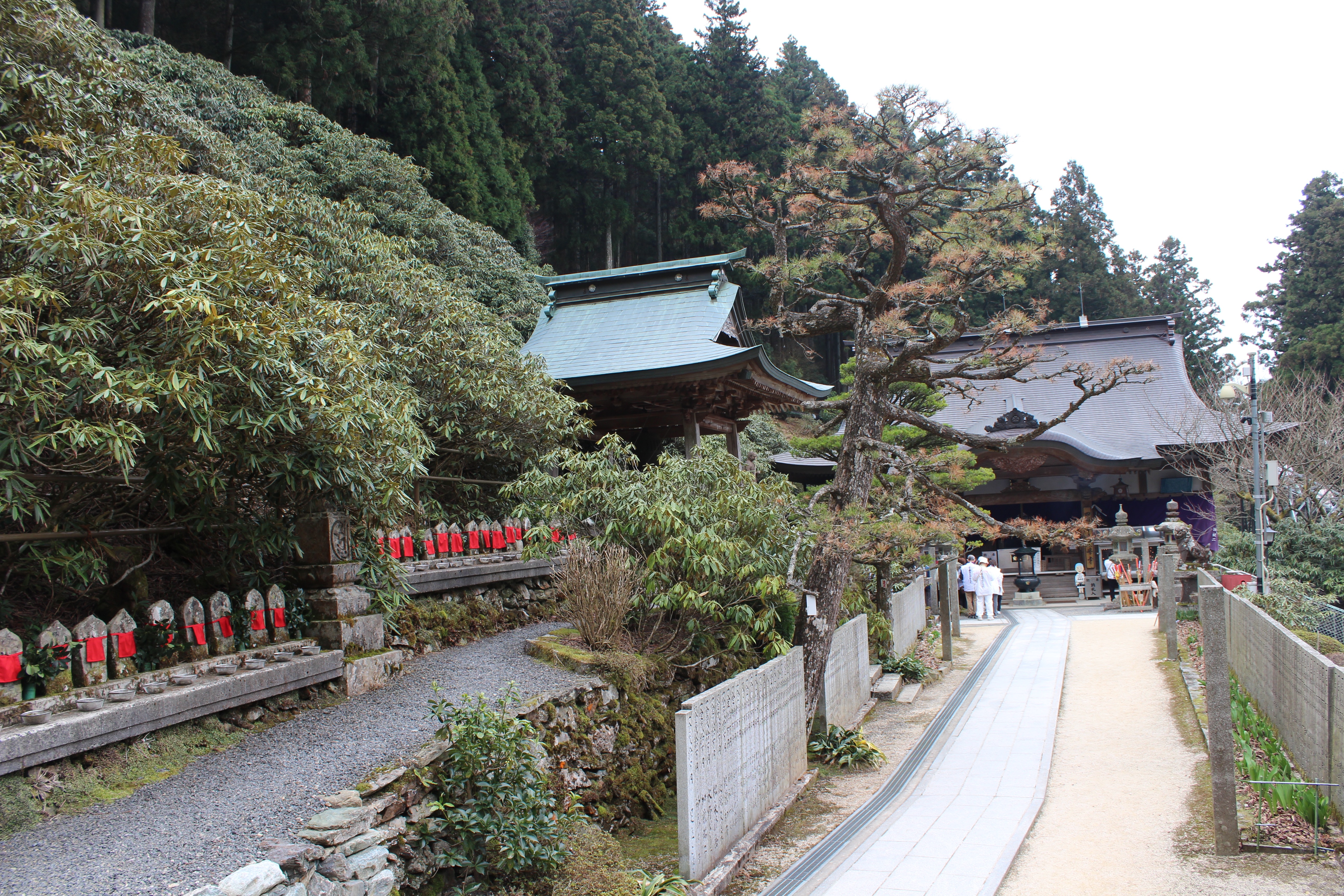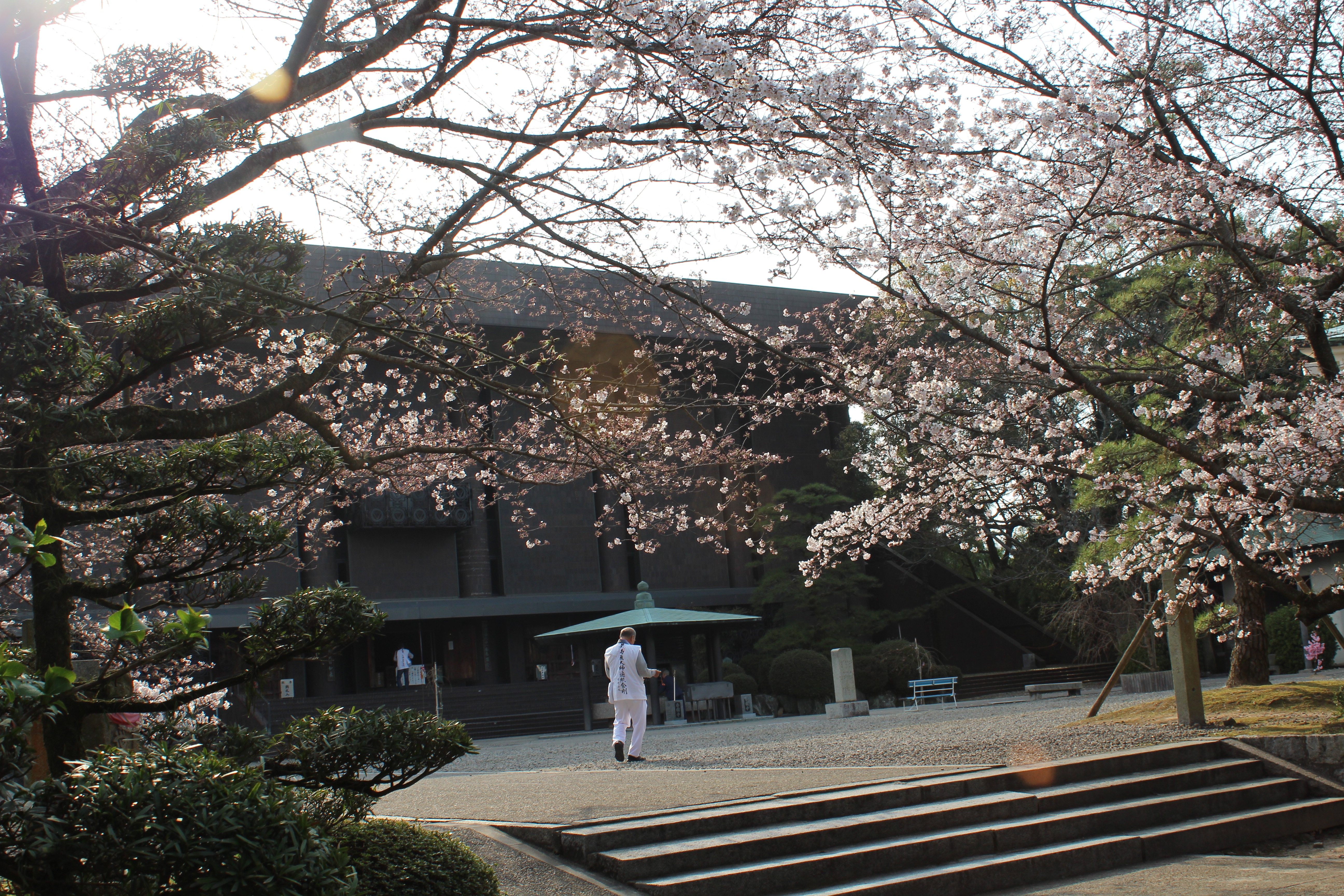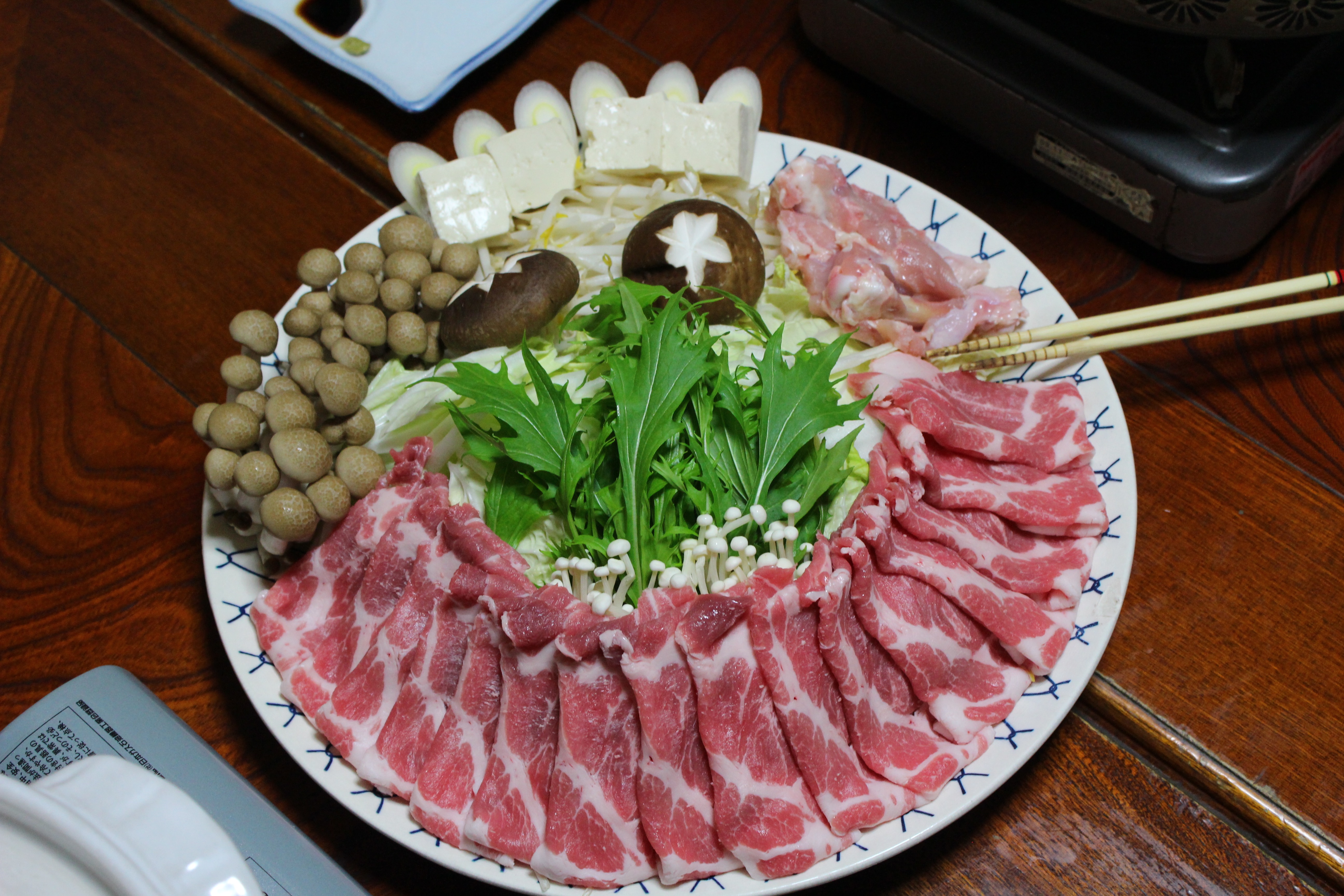Shaking hands with Kōbō Daishi (temples 59, 60, 61, 62)
Japanese religion is deeply rooted in nature and the sense of touch is very important
for Japanese people.
People are shaking hands with the statue of Kōbō Daishi (called Akushu-shugyō
Daishi, Shake-hand Practice Daishi) and touch the special black stone vase,
“Yakushi-no-tsubo“, Yakushi’s vase, (shown in large letters, above them are eye,
head,foot, etc. are written in circles for people to touch and cure the specific body
parts). Kokubunji’s main deity is Yakushi Nyorai, the Buddha of Healing,
who usuallyholds a vase of medicine.
Temple area of Kokubunji
Statue of Yakushi Nyorai, the healing Buddha
Many school children in Japan wear uniforms (in Tokyo only children going to
private school wear uniforms); Yellow caps are usually distributed to elementary
school children, so drivers can see them better.
Kōbō Daishi at the roadside to Yokomineji, temple 60
Yokomineji is an isolated mountain temple and not easy to reach. I loved the way up
to the temple grounds. Many Jizōs where placed beside the path. The moss covered
rocks and cedar trees created a feeling of rootedness and belonging.
Yokomineji (temple 60) famous for the Rhododendron bushes to the left. I would
have loved to see them in full bloom.
Sutra chanting bus Ohenros
On the walk down to Saijō city, I passed the Shirataki waterfall (part of the Okunoin
temple, which is a detached temple of Kouonji). The main deity is Fudō-myō-ō
(Acala), the unmovable one and bringer of light. Kongara Douji and Seitaka Douji,
two child servants, are standing right and left of him.
Kōonji (temple 61) is a huge, modern temple made out of concrete. I did not fall in
love with this building. Cherry trees in full bloom were softening the serious
appearance and brought some playfulness into the site.Overnight I stayed in the
Komatsu Ryokan, famous for serving Sukiyaki cooked in an iron pot on the table.
All the guests were pilgrims, many of them I knew. It was a nice reunion!
Ingredients for Sukiyaki
.
.
.


